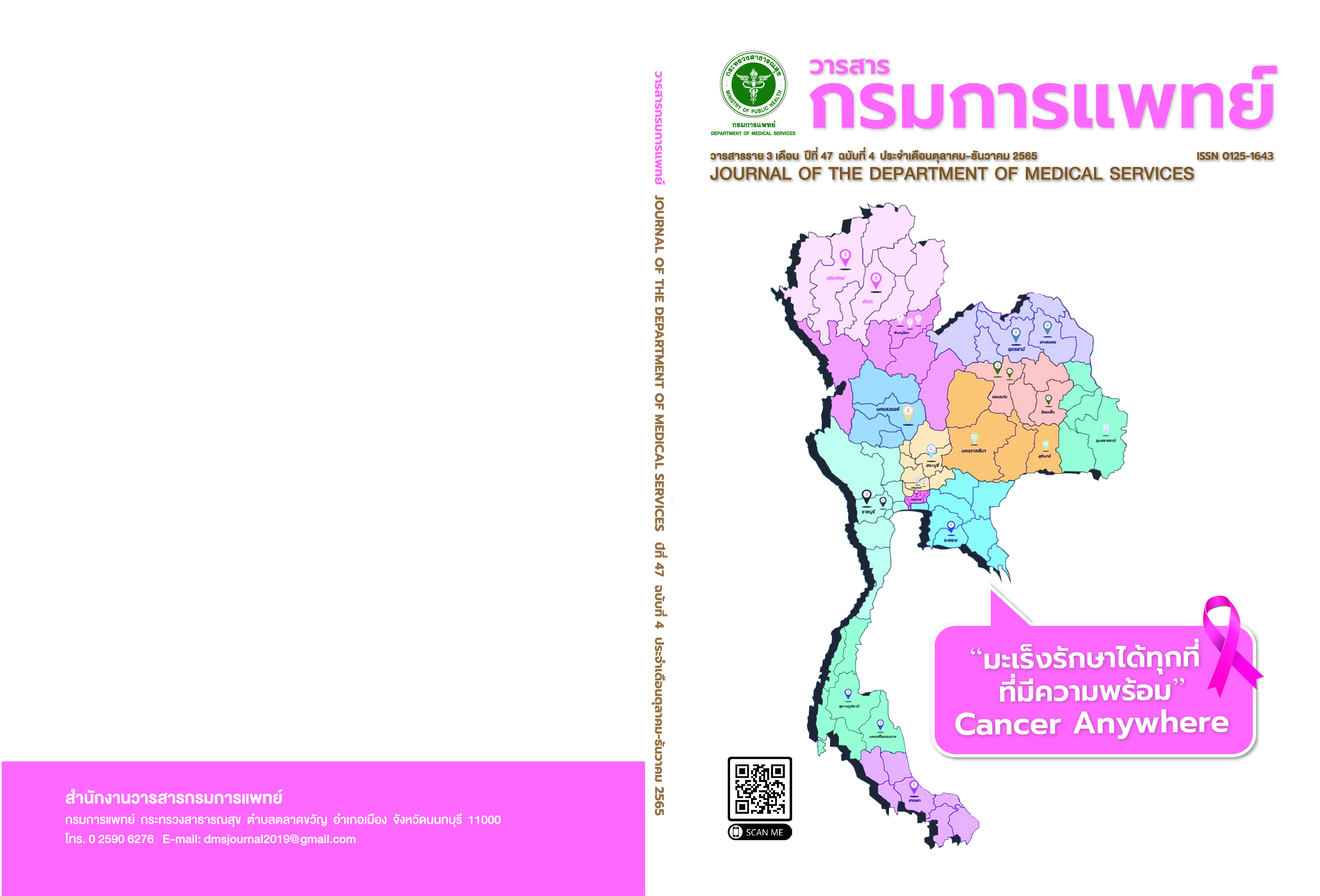Vitamin C Supplementation for the Elimination of Residual Peracetic Acid and Hydrogenperoxide in Reused Dialyzer
Keywords:
peracetic acid, hydrogen peroxide, dialyzer reuse, vitamin CAbstract
Background: Peracetic acid (PAA) is the most popular disinfectant for dialyzer reuse processing. After the elimination of microbes by disinfectant, PAA residual must be disposed via normal saline replacement following the standard practice guideline. However, the PAA residual and its by-product, hydrogen peroxide (H2O2), can be found in the dialysis membrane. The continuous accumulation of these free radicals can result in various human pathogeneses. Fortunately, these free radicals can be destroyed by Vitamin C. Objective: This study aimed to compare the elimination of PAA and H2O2 residual of the reused dialyzer with or without vitamin C supplementations. Method: The experimental group with 83 reused dialyzers with 125 milligrams (500 microliters) of vitamin C and the control group with 50 reused dialyzers with 500 microliters of normal saline during the eliminated procedure were executed. Both free radical residuals had been documented by PAA and H2O2 test strips at 2, 30, 60, 120, 180 minutes, respectively. Result: As for the evaluation of both free radical residues in dialyzer reuse groups while the H2O2 residue could be detected in the control group with time-dependent manner. Nevertheless, the reused dialyzers of both groups were clear from PAA residue. Consequently, the present study could be concluded that although the PAA rapidly alters to H2O2, 125 milligrams of vitamin C had sufficiently removed these two free radicals. Moreover, data from adjusted characteristics of reused dialyzers receiving vitamin C could reduced the incidence of residual H2O2 by 17.3 percent at the level of confidence interval 95 percent from (-16.7) to (-17.9), p-value < 0.001, when compared to the reused dialyzers without vitamin C supplementation. Conclusion: The additional procedure with 125 milligrams of vitamin C supplementation into reused dialyzer during the process of standard practice guideline could sufficiently reduced the incidence of residual PAA and H2O2.
References
Triranathanagul K, editor. Modern of Hemodialysis andHemodiafltration. Text and Journal Publication; 2017.
AAMI. Recommended practice for reused of hemodilayzer.editor. Vergenia: Association for advancement of medicalinstrumentation publisher; 2008.
Chayakun C. editor.Hemodialysis Clinical practiceRecommemdation 2014.Bangkok: Duentula; 2014.
Hemodialysis and Peritoneal dialysis Nursing practiceRecommemdation Bangkok: Duentula; Krungtepveschasarn;2015
Stragier A, Wenderickx D, Jadoul M. Rinsing time anddisinfectant release of reused dialyzers: comparison offormaldehyde, hypochlorite, warexin, and renalin. Am J KidneyDis. 1995; 26: 549-53.
Waniksamban W, Laonapaporn B, Thongdee C, Spilles N,Ussawawongaraya W. The peracetic acid rebound after rinsingprocedure in dialyzer reuse. Journal of the nephrology societyof Thailand .2016; 2: 50-54.
Kitis M. Disinfection of wastewater with peracetic acid: a review.Environ Int. 2004; 30: 47-55.
Lobo V, Patil A, Phatak A, Chandra N. Free radicals, antioxidantsand functional foods: Impact on human health. PharmacognRev. 2010; 4: 118-26.
Lacson E, Jr., Wang W, Mooney A, Ofsthun N, Lazarus JM, HakimRM. Abandoning peracetic acid-based dialyzer reuse is associatedwith improved survival. Clin J Am Soc Nephrol. 2011; 6: 297-302.
Sutin S. Vitamin and free redicals. Faculty of science andTechnology,Huachiew Chalermprakiet. 2016; 2: 80-81.
Liakopoulos V, Roumeliotis S, Gorny X, Dounousi E, MertensPR. Oxidative Stress in Hemodialysis Patients: A Review of theLiterature. Oxid Med Cell Longev. 2017; 2017: 3081856.
Canavese C, Petrarulo M, Massarenti P, Berutti S, Fenoglio R,Pauletto D, et al. Long-term, low-dose, intravenous vitamin Cleads to plasma calcium oxalate supersaturation in hemodialysispatients. Am J Kidney Dis. 2005; 45: 540-9.
France NC, Holland PT, Wallace MR. Contribution of dialysis toendogenous oxalate production in patients with chronic renalfailure. Clin Chem. 1994; 40: 1544-8.
Celasun B, Safali M, Yenicesu M. Secondary oxalosis of bone ina dialysis patient. J Urol Nephrol. 1995; 29: 211-4.
Pru C, Eaton J, Kjellstrand C. Vitamin C intoxication andhyperoxalemia in chronic hemodialysis patients. Nephron.1985; 39: 112-6.
Zhang KY ZL. Vitamin c supplementation in patients onmaintenance dialysis. . World J Nephrol Urol. 2014; 3: 344-50.
Downloads
Published
How to Cite
Issue
Section
License
Copyright (c) 2022 Department of Medical Services, Ministry of Public Health

This work is licensed under a Creative Commons Attribution-NonCommercial-NoDerivatives 4.0 International License.
บทความที่ได้รับการตีพิมพ์เป็นลิขสิทธิ์ของกรมการแพทย์ กระทรวงสาธารณสุข
ข้อความและข้อคิดเห็นต่างๆ เป็นของผู้เขียนบทความ ไม่ใช่ความเห็นของกองบรรณาธิการหรือของวารสารกรมการแพทย์


